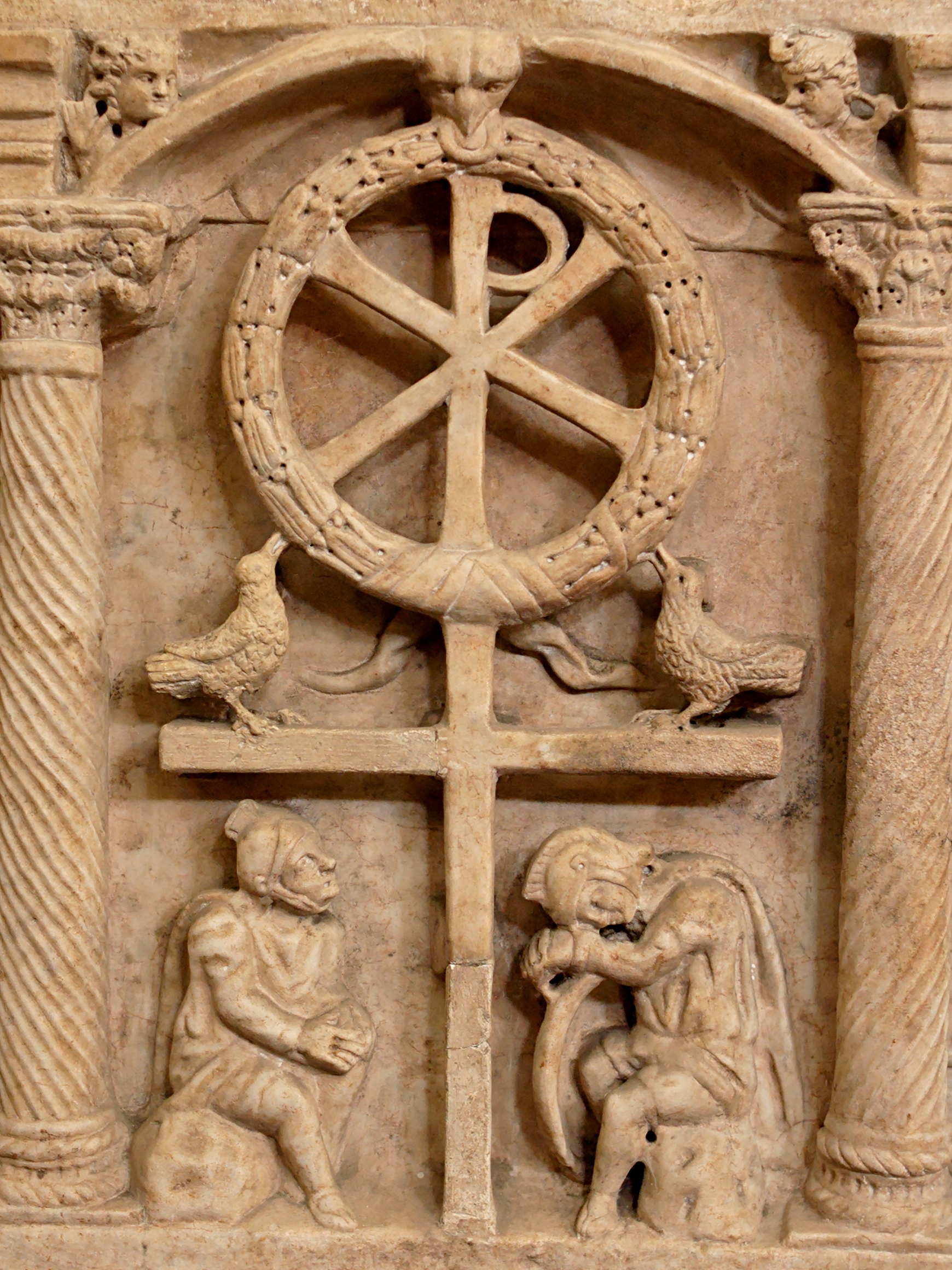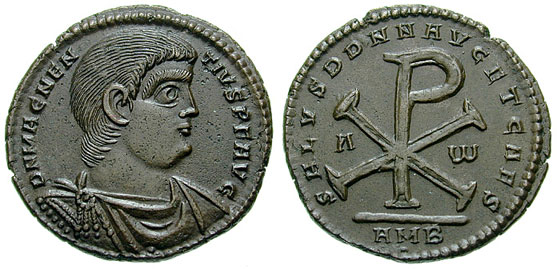Keeping the X in X-Mas
One of Manchester’s traditional celebrations of the season is the Manchester Men’s Club X-Mas Tree Sale, which started this week. But some wonder why isn’t it a Christmas tree sale? Has the modern impulse to save time, save energy, and trim words, finally stripped the Christ out of Christmas? Is the same business-efficiency that gave us Lite instead of Light and Nite instead of Night at work here stripping the season of its religious character?
I am very pleased to report that nothing nefarious, or lazy, or modern is happening at all. If you stick with this article for a few lines, you’ll see that X is the holiest letter of all.

Early Christian tombstone depicting the fish as a Christian symbol where we would see a cross today. – Funerary stele of Licinia Amias, one of the most ancient Christian inscriptions. Upper tier: dedication to the Dis Manibus and Christian motto in Greek letters ΙΧΘΥC ΖΩΝΤΩΝ / Ikhthus zōntōn (“fish of the living”); middle tier: depiction of fish and an anchor; lower tier: Latin inscription “LICINIAE AMIATI BE/NEMERENTI VIXIT”. Marble, early 3rd century CE. From the area of the Vatican necropolis, Rome. (Via Wikimedia)
The gospels were originally written in Greek, and Jesus’s name was written Ἰησοῦς Χριστός (which translates as Iēsoûs christos or Jesus Christ). It was in these Greek letters that the early church found some of their earliest imagery. First, the early Christians noticed that Jesus’ initials were I and X. The letter I made the “yeh” sound we find today in the letter /y/. This sound eventually becomes the J sound we have in English.The letter X was used for the “k” sound we find in /c/ still found in “christ” in English. This led to the earliest Christian symbol, because I and X are the first letters of the Greek word ΙΧΘΥΣ (meaning “fish”). As the first apostles were fishermen, this visual pun was appealing to the early church and a fish became the first symbol of Christianity.
The fish symbols of the 2nd century were quickly supplemented by symbols of the Cross and one of the most prominent, was the Chi-Rho, a symbol derived from the first letter of Jesus’ title.

Anastasis, symbolic representation of the resurrection of Christ, linking Chi-Rho with the cross. Panel from a Roman lidless sarcophagus of the “Passion type”, ca. 350 CE. From the excavations of the Duchess of Chablais at Tor Marancia, 1817-1821. (via Wikimedia)
Jesus of Nazareth was also referred to as The Christ. And as mentioned before, Christ in Greek (Χριστός) starts with the letter X. The X is called Chi and looks a lot like a cross. The second letter in Christ was the P, called Rho in Greek. And the Rho looks like a man, standing tall. And this led to the next important image, the Chi-Rho, because A Rho placed on top of a Chi gives you a man on a cross.
According to two different late Roman historians (Lacantius and Eusebius), the general Constantine had a vision before a great battle. It was the Battle of Milvian Bridge in October 312 A.D.

Roman Coin using Chi-Rho (XP) as a Christian symbol, 350 A.D. (via Wikimedia)
You may have heard this story. In many modern retellings it is said that Constantine saw the Cross in the sky, and used the Cross on his banners. And that is true in a certain way. But what he specifically saw was the Chi-Rho symbol. Constantine saw the P on top of the X, and he put this on his military standard (called the labarum). This XP symbol became Constantine’s symbol for the Christian faith, and when he became Emperor and established the church as an official religion of the state, the Chi-Rho mark ended up on all kinds of official artifacts, including the coins.
In English, the use of the X as an abbreviation for Christ is as old as the language itself, and draws on the earlier history of the Roman church. In the Anglo-Saxon Chronicle of 1021 A.D., the word “Christians” is written Xpes. Wycliffe, an English philosopher and theologian writes in a sermon in 1380, that “X bitokeneþ Crist.” (X betokeneth Christ) (which is to say, X stands in for the word Christ). This usage of X continues without controversy for centuries, largely because the people who could read and write English also were educated in Greek and Latin. In 1541, we find Christmas written as X’temmas. And in 1755, we find Xmas in common usage.
To sum up:
Xmas is older than America!
And the use of the X for Christ in English dates to the years before the Norman Conquest.

Mosaic from Roman Britain indicating Romans indeed introduced the use of the Chi-Rho as a Christian symbol to England. (via WIkimedia)
More importantly, the use of the Greek letters of Jesus’ name are the very earliest symbolic tools of the church, drawing believers back to the ideas and attitudes of those Christians who lived and thought in the first centuries of the common era. When we see the X in use today, on signs and in advertisements, we can feel a bridge across the ages that leads us back to the original language of the gospels, and to the Hellenistic culture that produced the faith at the heart of this season.







You must be logged in to post a comment Login